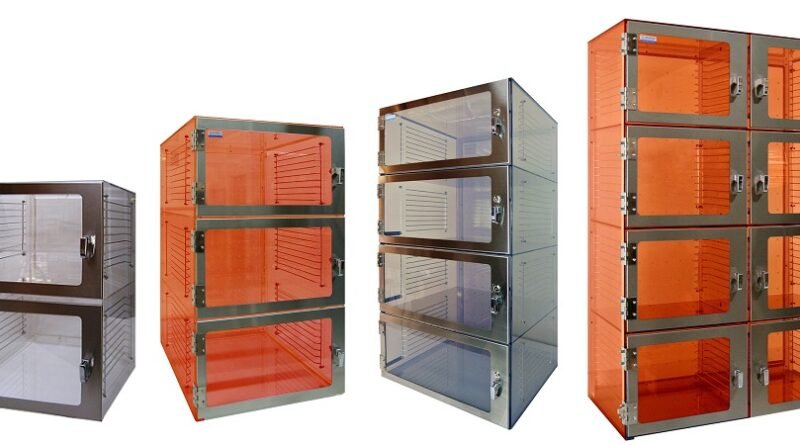How to Restore Plastic Desiccator Cabinets?
A desiccator cabinet is a nitrogen purged cabinet that gives you dry and clean storage to your sensitive substances used in a laboratory that protects it from any moisture exposure, any contamination to particles, and ESD damage.
When you store sensitive materials in a desiccator cabinet, sometimes there is an unnecessary high flow of gas into the cabinet’s misalignment that can waste a lot of costly nitrogen gas. When there is a positive pressure in the desiccator cabinet’s chambers, the moisture is controlled between them, and the substances stay refrained from any contamination.
Cleatech serves you a lot of various models of desiccators in sizes from 12in. x 16
In. x 12in. to 53in. x 29in. x 64in. Their desiccators are capable of using nitrogen, argon, and compressed dry air purging, which leads to a reduction in oxidation, and it also increases the life-span of sensitive components.
The desiccators are not 100% airtight, so there can be a continuous gas leak in small portions. Let’s discuss the reasons and how they can be prevented to restore your desiccator cabinets:
Misalignment of cabinet

The misalignment is caused generally while you are installing the plastic desiccator cabinet. When you get the product delivered, there is a lot of traveling of products, and plastic in the cabinet is flexible can get dented or get a bit problematic, and the doors will show some fluctuations.
Before installing the desiccator cabinet, ensure the surface where you are keeping it is even and leveled. If the surface is not balanced, the cabinet will face alignment issues, and the sensitive substances can also fall to the side because of this.
If you notice that your cabinet’s doors are not closing properly, there are some steps to ensure that the door’s latches are in proper positions.
- Open all the doors of your desiccated cabinet.
- Start closing the doors starting from the bottom of your cabinet to the top. This way, you can keep a keen eye that all the latches are centered in the corresponding catches.
- When all the chamber doors are aligned well, they will hold the cabinet in an acceptable position, and it will prevent the gas from leaking.
If there is still any problem, you can contact the place where you bought the cabinet.
Gasket wear and tear

The high-quality desiccated cabinet doors have gaskets installed in them for minimizing the risk of leaking gas. Every mechanism loosens by the course of time; the same thing can happen to gaskets as it doesn’t matter that they are fixed with adhesive or mechanically.
When the gasket loses its tightness seal from the door, the gas in the desiccator starts leaking leading to the oxidization of sensitive substances kept in the chambers. This is not much of an issue, but if you are using nitrogen gas, this waste and leaking could get really expensive for you.
- Change the adhesive gaskets and replace them with new ones.
- You can replace the door of the cabinets
- A new door will provide a way to keep the doors sealed and refrains the gas from leaking.
While attaching the gaskets, you can use the adhesive method because it seems to be a more economical choice for you. This is economical because it is easy to change the gaskets instead of replacing the cabinet’s whole door for its better working.
Excess gas pressure
Gas is the main component when it comes to desiccator cabinets. A certain amount of gas is good for the substances as it keeps the contamination at bay. Without the adequate number of bleed valves, the gas flow exceeds, which can, in turn, be infectious for the substances.
Gas leaking can also waste a lot of nitrogen gas and can cause trouble with your expenses.
- The simplest solution to keep the gas flow in limits is to use an automatic gas control system. It can help you decrease the gas flow easily.
- Once the system is programmed and regulated, it will maintain the humidity and gas pressure in the desiccator’s cabinet.
- Adding a relief valve, also known as a bleed valve in the desiccators cabinet, can give you the utmost efficiency of it, and it also helps in reducing the waste that is generated.




